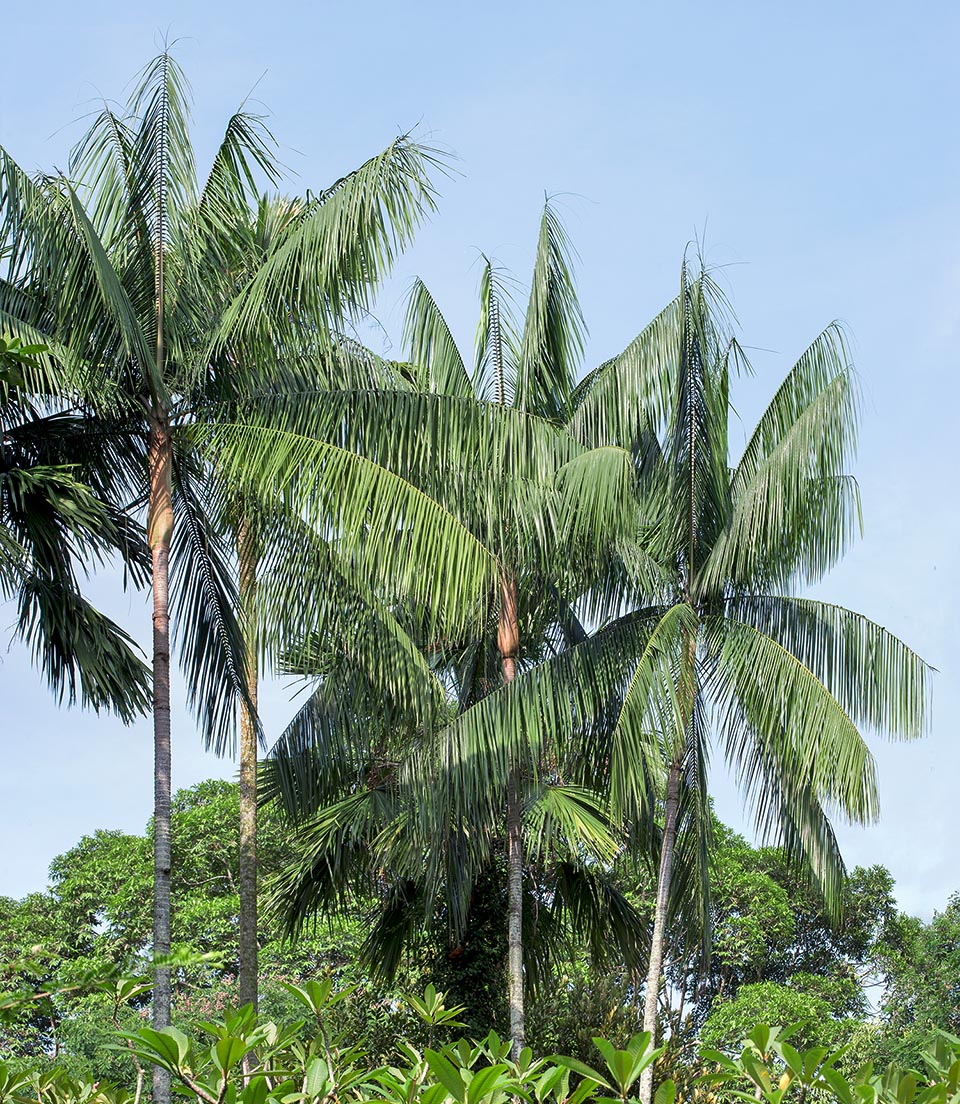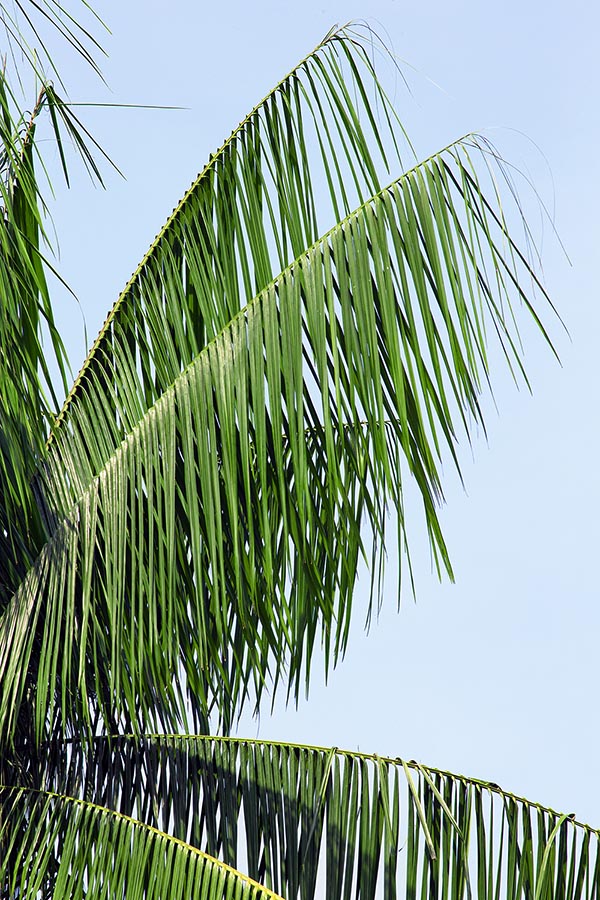Family : Arecaceae

Text © Alessandro Marini

English translation by Mario Beltramini

Moluccas and New Guinea native, Rhopaloblaste ceramica can be 35 m tall. Elegant leaves but doesn’t stand long, in cultivation, less than 10 °C temperature © G. Mazza
Rhopaloblaste ceramica (Miq.) Burrett is native to the Moluccas and to the north-western region of New Guinea. Its distribution range extends from the plain woods to the primary mountain pluvial forests, from 35 to 900 m of altitude. In the secondary pluvial forests, it can be found on volcanic, loose, porous soils, but also on the deep clay soils of the alluvial plains.
The name of the genus Rhopaloblaste comes from the combination of the Greek epithets “ῥόπᾰλον” (rhópalon) mace, club, and from “βλαστός” (blastós) bud, embryo, and refer to the shape of the embryos. The name of the species, ceramica, indicates the provenance, from the island of Ceram, Moluccas, where it was discovered initially.
Common names: Majestic Palm, Ceramic palm (English), Ahad, Henahena, Ogulubenge (Indonesian).
Rhopaloblaste ceramica is a big dioecious monocaulescent palm with grey stem up to 35 m tall and up to 35 cm broad, that may be taller than the trees of the pluvial forest. The stem is rough, marked by the brown rings of the fallen leaves scars, spaced 12-14 cm.

The vegetative apex is edible. The stem is locally used for arrowheads and floorboards © Giuseppe Mazza
The foliar crown is formed by 15-17 big pinnate hanging leaves carried by short petioles.
The foliar rachis is 3 to 4 m long and is covered, especially below, by abundant dark brown pruina. The pinnulae are irregularly arranged on the rachis, from 110 to 120 per side, about three centimetres apart, up to 115 cm long and 2,5 cm broad. They have linear shape with bifid apex and all hang down, on the same level. The upper lamina is dark green, with small brown scales on the ventral vein, whilst the lowest is dull green, with diffused brown tomentum.
The petioles are up to 3,5 cm long and end in a whitish sheath wrapping the trunk, up to 1,5 m long and up to 40 cm broad, partially covered by brown tomentum.
The great inflorescence is initially enclosed by a deciduous rough grey spathe that emerged in correspondence of the rings on the stem, under the foliar sheaths.
After opening, the inflorescence grows up to 130 cm in length and up to 150 cm in breadth, on a robust peduncle 8-10 cm long and 10 cm broad.
The inflorescence has a complex shape, ramified in 3 orders, with robus rachillae, oriented in different directions, up to 75 cm long and up to 7 cm broad. The flowers are sunk in small pits, arranged in triads formed by one female flower and tw male.
The fruit is 3,5 cm long and 1,8 cm broad, ellipsoidal and asymmetric, yellow when unripe, then red when ripe, with fibrous mesocarp. The seed is 3 cm long and 1,6 cm broad, dark brown.
It reproduces by seed, kept in water for 5 days and then planted in a sandy and humid compost, well drained, at a constant temperature over 26 °C.
Rhopaloblaste ceramica is the biggest of all species of the genus and can be distinguished from the more known Rhopaloblaste augusta because of the great asymmetric fruits and the inflorescence ramified on three orders with robust rachillae.
It is considered as one of the most beautiful palms for the elegant posture of the large crown of leaves hanging on the tall and thin stem. However, it is not yet very diffused in the parks and in the gardens out of South East Asia, despite it does not present particular difficulties of cultivation.
It can be cultivated only in the tropical and warm subtropical climates as it cannot stand for long time temperatures below 10 °C. The young specimens prefer the shady position, sheltered from the winds, but the adult ones do grow well in direct sun. It is not particular about the type of soil used for the cultivation but prefers that the same is kept humid and well drained.
The vegetative apex of the palm is edible. The stem is utilized by the local populations to make the arrowheads to fabricate the floorboards of the houses.
Synonyms: Cyrtostachys ceramica (Miq.) H.Wendl.; Rhopaloblaste dyscrita H.E.Moore; Rhopaloblaste hexandra Scheff.; Rhopaloblaste micrantha Burret.
